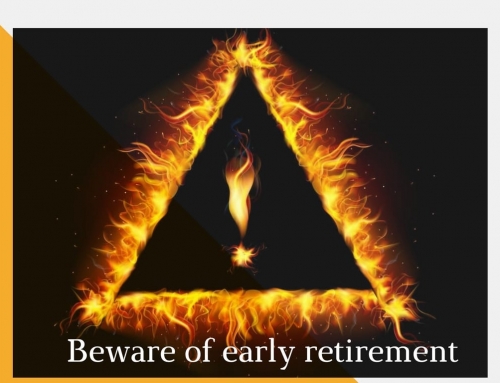If you are not familiar with the term agism, it is akin to racism or sexism, only it is based on age and involves holding negative stereotypes about people of different ages.
Agism can lead to unfair treatment.
In the world of work, it often involves overlooking middle age workers for career advancement or promotions (it can, and does, also affect younger workers in different ways).
Agist stereotypes held by managers influence the training and development initiatives offered to older workers, obstructing not only the opportunity for these workers to improve their skills and abilities but stifling, if not extinguishing, their motivation for achievement (more on that in the next post).
Research indicates that managers tend to prefer potential over experience.
Here is the issue: no one wants to work in a place where they are not welcomed, regarded as old, or where their knowledge is perceived as irrelevant and obsolete.
Agism may prove much more problematic for companies than they realize, as they may be pushing their knowledge and experience out the door.
And once these workers have left your organization, there is little chance they will return or offer their expertise on matters that are essential to the workings of your firm. Especially if they feel discriminated against and pushed out.
And who could blame them! Wouldn’t you feel the same?
The other and perhaps more troubling issue that arises from agism at work is the possibility that mature workers who feel stigmatized as “old” start to identify with this label.
Stereotypes can lead to self-fulfilling prophecies because people come to believe the labels imposed upon them are accurate, valid and objective depictions of themselves. In the realm of work, people begin to devalue and lose interest in their jobs and opt to exit the workforce and retire prematurely.
It is a coping mechanism to reduce stigma-related stress.
If you have come to believe these stereotypes as true, you need to rework your mindset around aging. You need to find role models that challenge your ideas of what it means to grow older at work.
For example:
- Did you know that Ray Kroc started McDonald’s at the age of 60?
- How about Frank Lloyd Wright? Do you know how old he was when he designed the Guggenheim museum?
To find out, and to see other examples of what people are accomplishing at 60, 70, 80 and yes even 90, click on the attached slide deck.
If you are an employer, you need to reflect on your organizational policies. Here are 3 tips on how to better manage your aging workforce.
1. Offer career training to employees of all generations, and make an effort to communicate that your firm values professional development for all.
2. Base promotions on performance Older employees, like all employees, should be evaluated based on their ability to meet performance objectives. Age is irrelevant.
3. Manage the dynamics of multi-generational workforces Facilitate seminars and workshops on the benefits of having different generations at work and what each generation brings to the table. Such programs foster the beginning of a conversation about age stereotypes, and how to combat negative assumptions about workers of different generations.
The June 2016 report on “The New Talent Landscape: Recruiting Difficulty and Skills Shortages“, from the Society for Human Resource Management stipulates the following:
“retiring Baby Boomers will continue to be a key staffing challenge in the years ahead. Organizations that can continue to engage their mature workforce and even retain them beyond retirement age will have an advantage.”
If the information above does not persuade you to start thinking differently about aging and mature workers then remember this:
If we are lucky we will all live to be older workers. The arrogance of agism is that we younger employees are dismissing and denigrating our future selves.To your success!
Dr. Gill
P.S.
Food for thought: A candidate with 5 years left until retirement may be with your firm, on average, longer than a new and younger hire
P.P.S.
Fun fact (this one is not so fun): The Age Discrimination in Employment Act (ADEA) in the U.S. forbids age discrimination against people who are age 40 or older. Yes- you read that correctly. While we like to think of 40 as the new 30, 40-year-old employees fall into the category of aging workers!





